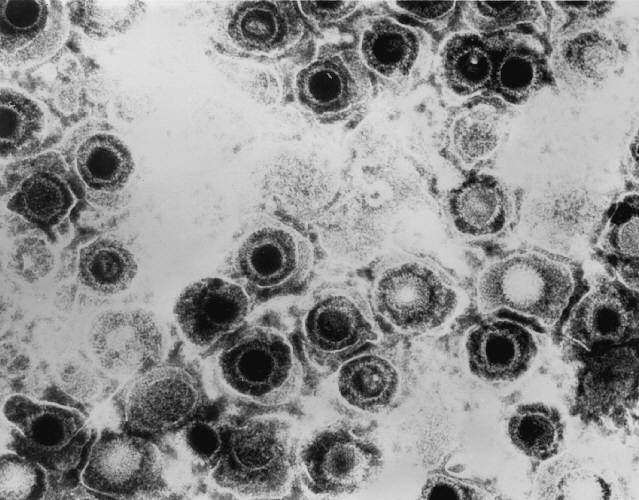
Engage in a psychedelic conversation long enough, and you’ll probably hear terms like “ego death” tossed around as casually as “Shpongle” and “blasting off.”
But what is the ego?
With so many passing references, can we be certain everyone’s talking about the same thing? After all, ego is an inherently abstract concept, and if it’s central to psychedelic work, it seems important that we come to some consensus on the definitions we’re using.
Colloquial Use of Ego
The most general usage of the term conjures images of a jacked-up, tank-top wearing bro telling people how much he can bench while slamming Jaeger at the club. “He’s so egotistical,” one might say. “His ego is as big as the Earth!” This colloquial use of ego equates to being full of oneself, entirely self-centered and incapable of empathy.
While this usage bears relevance for our discussion, this is not the ego that folks refer to with terms like “ego death.” The colloquial ego is seen as negative, and though the ego of psychedelic conversations is often presented negatively, it is far from inherently antagonistic; rather, it’s necessary for life as a human being.
But before we go deeper, let’s look at the term’s psychological roots.
The Ego in Psychoanalysis
If you’ve taken Psych 101, you probably learned that ego was a central concept for Sigmund Freud. The Freudian ego is the house of consciousness. It operates according to the “reality principle,” which mediates the unconscious battleground between the warring energies of “id”—our primal, chaotic instincts, like sexuality—and “superego”, our internalized societal voice dictating when those instincts should be curbed. The result of this struggle is repression and neurosis, which the ego can heal through “making the unconscious conscious” via methods like hypnosis, free association, and dream analysis.
Freud’s protege, Carl G. Jung, concurred that the ego is the seat of conscious awareness; however, Jung broke from Freud in 1913 by rejecting his mentor’s dogmatic focus on sexuality, ultimately amending the ego concept entirely. Jung’s ego is in continual dialogue with the “personal unconscious,” which, like Freud’s unconscious, is constituted of memories, traumas, and fantasies unique to the individual. But Jung’s ego is also engaged with the “collective unconscious,” a repository of the totality of human experience across cultures and time.
The collective unconscious manifests through archetypes—patterns of energy that organize the psyche and play out symbolically through dreams, myths, and visions. Jung’s ego engages with archetypes through a personal lens, finding alignment with particular patterns at particular times along its process of “individuation,” becoming the Self one is meant to be. The Self is the psyche’s core archetype, represented via symbols such as mandalas, and egoic unity with the Self’s transcendent nature marks the completion of the individuation process, the achievement of wholeness in life.
These psychoanalytical concepts are among the most common reference points for the term “ego” as used in psychology. However, these concepts are distinct from the ego of spirituality, which is more akin to the ego we find in psychedelic conversations. While understanding these psychological conceptualizations can be helpful in psychedelic journeys, confounding them with terms like “ego death” would constitute a fundamental misunderstanding.
Ego and Spirituality
When spiritual communities speak about ego, they are typically referring to a structure of the psyche that frames one’s worldview. It is one’s filter on the world, creating the reality that passes through. It’s our beliefs, fears, desires, fantasies, regrets, expectations, and anything else affecting what Buddhists call “clear seeing.” It’s analogous to the Buddhist notion of “self”: the illusion that we are a chronological entity of concrete, indivisible qualities, when really we are as impermanent as the world we perceive.
Like the colloquial ego, this spiritual ego is self-centered in its focus on our individual perception, but unlike the colloquial ego, that perception isn’t always insistent on our awesomeness. Ego could tell a negative story about ourselves: “I’m not worthy of love,” or, “I’m bound to fail.” Perhaps it creates a negative expectation: “My friends will leave me,” or, “My partner wants to cheat on me.”
Ego might be understood as the way our narratives of self and world affix reality to the structure of our lives. But these narratives cannot always be reduced to words. They include embodied responses, such as anger at traffic or judgment over someone’s political leanings. According to David Foster Wallace’s 2005 Kenyon College commencement speech, these narratives constitute our default setting: “a close-mindedness that amounts to an imprisonment so total that the prisoner doesn’t even know he’s locked up.”
Doors of Perception and the Default Mode Network
In relation to psychedelics, Aldous Huxley provided a helpful metaphor in his groundbreaking 1954 book The Doors of Perception. In documenting his experiences on mescaline, Huxley spoke of the brain’s “reducing valve.” “To make biological survival possible,” wrote Huxley, “Mind at Large has to be funneled through the reducing valve of the brain and nervous system. What comes out at the other end is a measly trickle of the kind of consciousness which will help us to stay alive.”
The universe is profoundly overwhelming, a barrage of stimuli that would render anyone nonfunctional if received unfiltered. The psychedelic experience, according to Huxley, loosens that valve, opening one into a broader experience “beyond the veil,” closer to how things really are.
A simple but helpful metaphor is the noise spectrum. The human ear is capable of hearing a limited range of frequencies. Other animals are attuned to different frequencies; bats, for instance, can echolocate due to their attunement to high frequency reverberations. If humans heard a broader range, they’d have a broader world to navigate, and if that extra noise didn’t serve adaptation, the breadth would become a hindrance. A reducing valve is necessary for mere survival.
Recent research in neuroscience from Imperial College London appears to have found the neurological corollary of this reducing valve. A 2014 study led by Robin Carhart-Harris discovered that under the influence of psilocybin, the brain shows reduced activity in the “Default Mode Network” (DMN), an “orchestrator” of consciousness, the “physical counterpart of the narrative-self.” The DMN reduces “primary consciousness”—formless, disorganized entropy—into “a sensation of possessing an immutable identity or personality.” In short, the DMN reduces overwhelming reality into a chronological self, or ego, and the psychedelic experience shuts that ego down, opening consciousness into a primordial state of being.
Neither Huxley nor Carhart-Harris framed this ego reduction as an enemy. These functions of the brain are essential to our survival, for without them, we would be continually overwhelmed, vulnerable to predators and unable to survive.
Ego as Enemy or Friend?
This is not to say that the ego is always an ally. The key point of differentiation is the nature of one’s relationship with the ego. For instance, the colloquial, overconfident ego demonstrates a particular kind of ego-relationship that is so reductionistic in its filtering of reality that one loses the ability to delineate between boundaries of self and boundaries of the universe, convincing oneself that the filters are congruent with reality itself. When the ego is mistaken for reality, problems ensue, for this ego-relationship filters out qualities like openness to new perspectives, humility, and contemplation of a transpersonal dimension.
In spiritual communities, it’s common to see a different version of a similar kind of ego: the “guru” ego who claims to be “egoless” due to deep inner work that has dismantled the illusory self. It’s likely that these folks have had transpersonal experiences, and that these experiences have been “ego dissolving,” deactivating their DMN and fusing them into entropic non-dimensionality. But these would-be gurus mistakenly believe that such non-dimensionality becomes permanent, and that their ego won’t return. Thus, they integrate a new interpretative structure in their DMN: the belief that their DMN no longer exists. Ego convincing itself it’s non-ego, and there’s no arguing otherwise.
In such a state of self-delusion, these people often project unresolved shadow issues and insist that projection is truth received from an intelligence beyond themselves. History has shown that these people are often able to convince confused, vulnerable seekers of their spiritual authority, such as we’ve seen with the cases of Charles Manson, Jim Jones, and countless other “gurus” with pathological egos. Remember that Wallace quote: “an imprisonment so total that the prisoner doesn’t even know he’s locked up.” Harmful as these folks may be, they are ultimately prisoners of their own perception.
Understanding Ego Death
We all have ego. Without some interpretative structure, we are groundless and vulnerable. The goal is not to eradicate it forevermore; the goal is to become more aware of it and to challenge its stalwart beliefs, especially if those beliefs promote unhealthy behaviors. Nevertheless, temporary eradication can provide valuable insight, as claimed by many who experience “ego death.”
The Default Mode Network’s deactivation into a more entropic state appears to be a correlate to “ego death.” In ego death, the filtering valve goes offline, and one transcends the ego. One’s default understanding of self dissolves, and one recognizes that their identity, along with the world they inhabit, is far more complex than they had previously realized. Such experience can grant valuable insight into how the ego constructs experience. It can also be terrifying, leaving one to question,“If I am not my ego, then who am I?” When there is no clear answer to that question, where might a person turn?
Many turn to various wisdom traditions. In the transcendent experience of Hinduism, “Atman”—the self, the ego”—recognizes its identity with “Brahman”—Ultimate Reality, the universe itself. Christian mystics speak of “Christ consciousness,” of the individual’s soul-level unity with “the Godhead.” Huxley referred to “Mind at Large” as one’s ultimate identity. Some describe identity as “awareness,” or “pure consciousness.” However you choose to describe it, the “true” self is felt in the numinous, mystical experience spoken of by William James in The Varieties of Religious Experience, where “noetic” and “oceanic” qualities strike us with the power of ultimate truth.
Of course, none of this can be reduced to mere words. Trying to communicate “ego death” is like trying to describe noise to a deaf person. The only way to possibly understand it is through direct experience.
This is not to say that you should scurry off and obliterate your ego with a heroic dose. If you do, however, it’s best to hold yourself lightly, because when your sense of self unravels, and you have no ground on which to stand, there’s no real telling how you might respond. In such a state, struggling to cling to ego identity would bring only terror. Regardless, it’s likely to transform your understanding of the world and your place inside it. As the DMN goes back online, it will incorporate this new information, and your structures of self will be altered in what could prove to be a lasting way.
It may be helpful to bear in mind words often attributed to Chogyam Trungpa Rinpoche, the controversial founder of Naropa University: “The bad news is you’re falling through the air, nothing to hang on to, no parachute. The good news is, there’s no ground.”
Just don’t get to thinking that navigating an experience like this makes you transcendent forevermore. We all have egos. When ego is the enemy, we are at war with ourselves, and our internal battles have a way of manifesting externally. When ego is an ally, we work with its edges, amending it into as compassionate and holistic a framework as possible. It’s challenging to look honestly at our patterns, but as we do, we transcend those patterns, lessening their stranglehold on experience and integrating limitlessness into our limited being.











